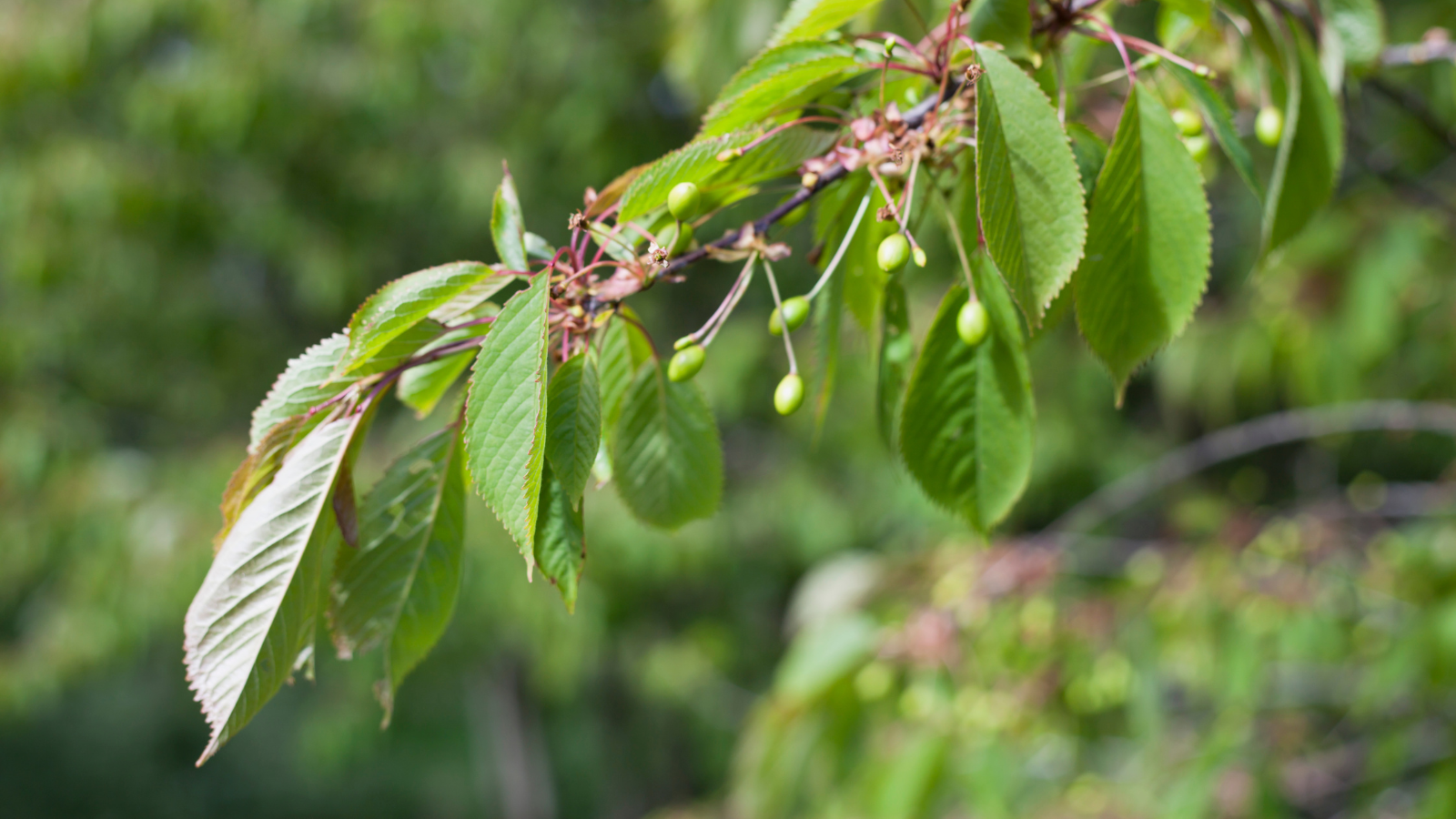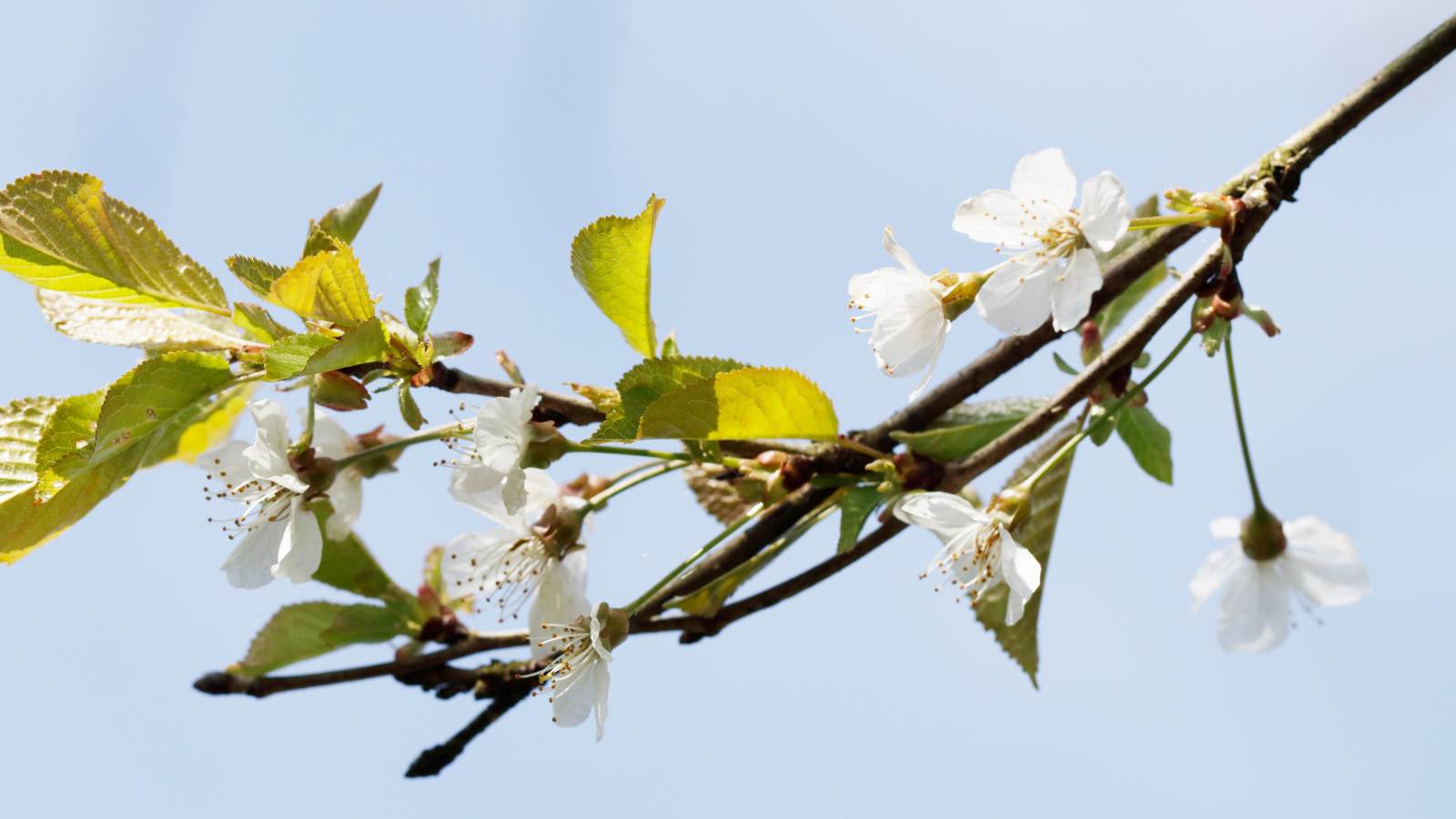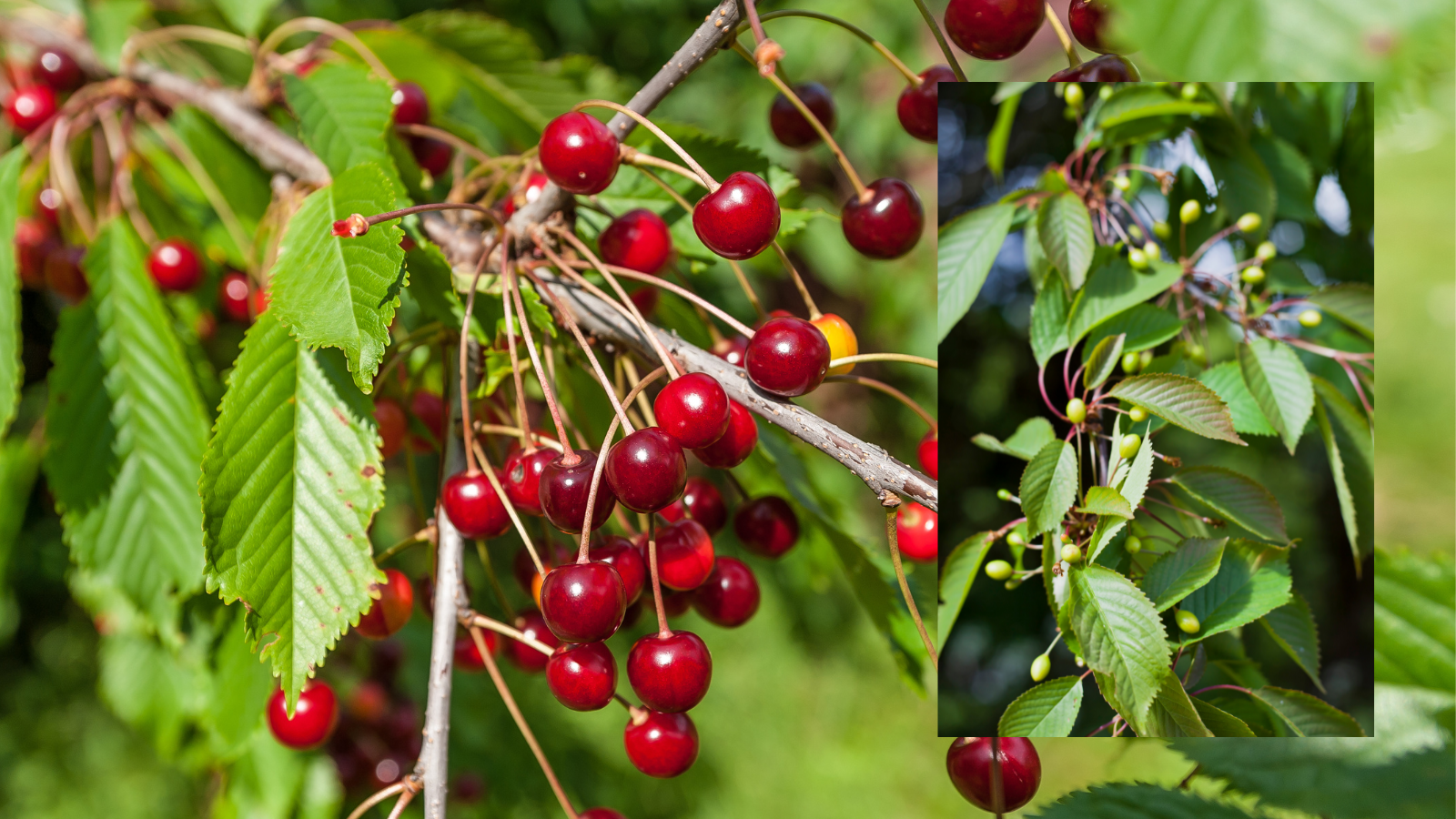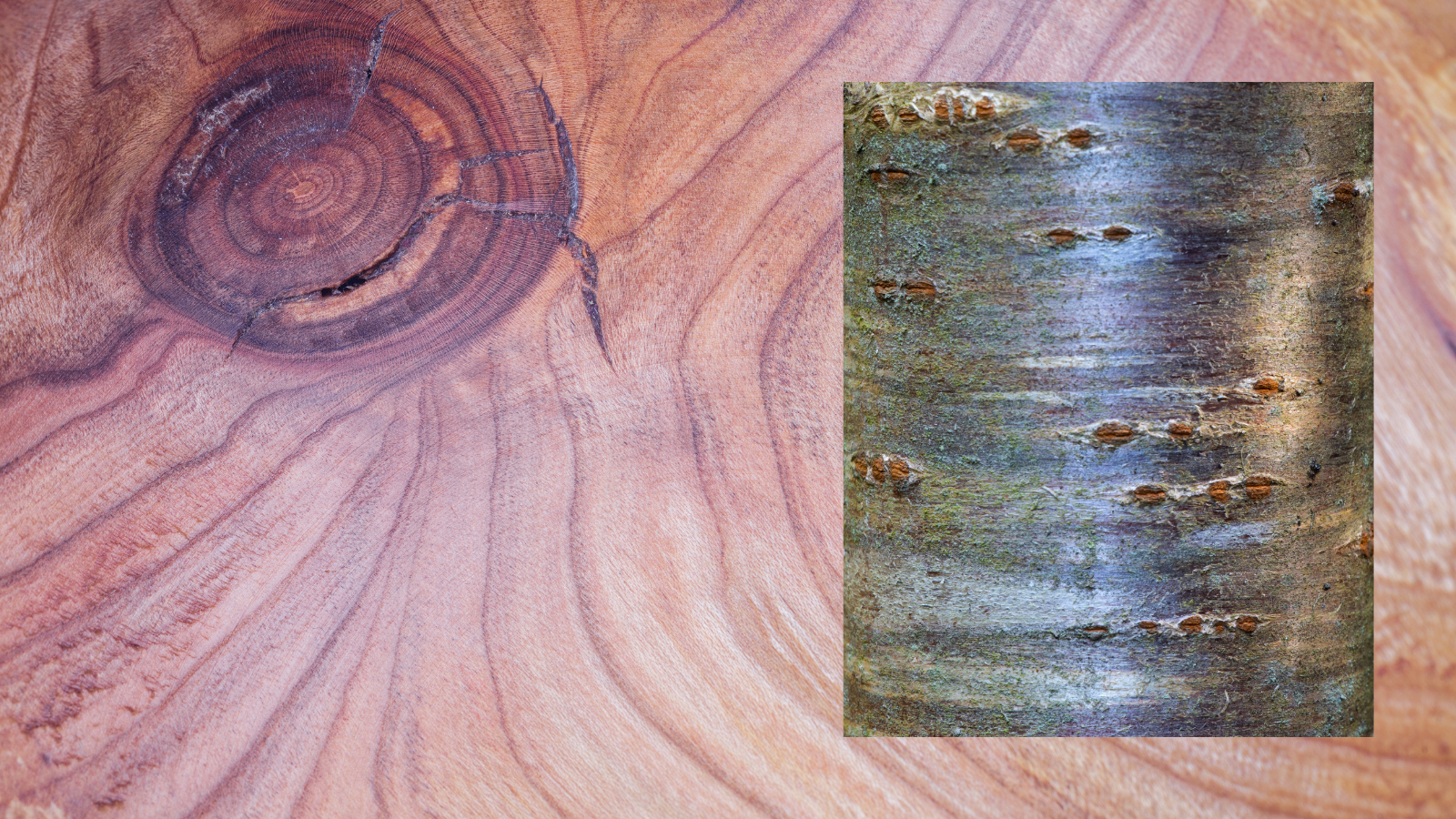Wild Cherry
(Prunus avium)
This elegant specimen with beautiful fruit, flowers and bark holds great potential for nurturing and feeding wildlife, whilst mitigating the challenges of climate change, when thoughtfully planted. Its beauty and utility make it a vital part of our natural heritage…
Scientific Name: Prunus avium
Family: Rosaceae
Average Height: These trees can reach majestic heights of up to 30 metres.
Average Canopy spread: With a broad and welcoming canopy, it can stretch up to 15 metres.
Preferred Ground Conditions/Habitat: Wild Cherries thrive in well-drained, fertile soils, often found in woodlands, hedgerows and parklands across the UK.
How to Identify Wild Cherry
Wild Cherry Leaf ID: The leaves are glossy green in spring turning orange and red in autumn. Oval-shaped, with finely serrated edges, they provide a vibrant seasonal spectacle.


Wild Cherry flower ID: Delicate white blossoms emerge in clusters in early spring, offering a mesmerizing display and a rich source of nectar.
Wild Cherry Fruit ID: Cherries! Small, sweet and succulent, they are a favourite of birds, including the Blackbird (Turdus merula) and Song Thrush (Turdus philomelos). Many of our cultivated cherry varieties are descended from this tree.


Wild Cherry Bark ID: The bark of Wild Cherry trees is beautiful; smooth and reddish-brown when young, gradually developing horizontal lines as it ages.
What Native UK Wildlife Does Wild Cherry Support and How Does It Support Them?
The Wild Cherry is a crucial player in the ecosystem orchestra. Its early blossoms provide essential nectar for pollinators like bees and butterflies, aiding in their survival. When autumn comes, the ripe cherries become a feast for various birds, such as the Bullfinch (Pyrrhula pyrrhula) and Mistle Thrush (Turdus viscivorus), enhancing their diets and supporting their populations.
Properties and Uses of Wood/Parts of the Wild Cherry
The wood of Prunus avium is prized for its fine grain and strength. Historically, it has been used for crafting musical instruments and furniture. Today, it still finds application in high-end cabinet making and woodworking projects, contributing to sustainable, local industries.
Start your tree planting journey today. Join I Dig Trees and be a part of something truly special.
Together, we’re taking positive action - planting millions of trees for climate, wildlife and communities.
